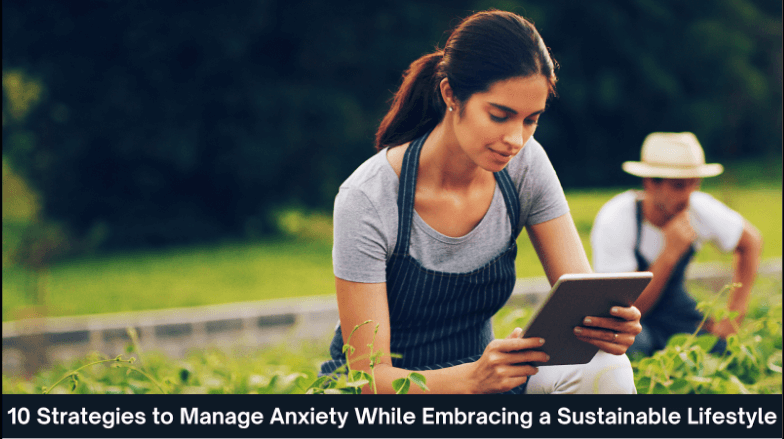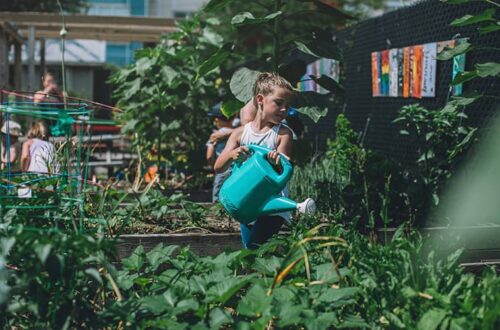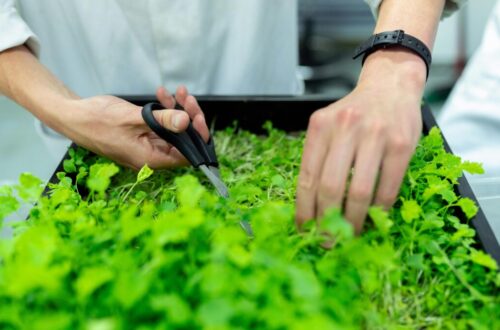Living sustainably isn’t just a buzzword—it’s a way to make a real difference for the planet while improving your own life. I learned this firsthand a few years ago when I started composting in my tiny apartment. My kitchen scraps turned into rich soil for my herbs, and it felt like a small victory every time I avoided adding to the landfill. Sustainability is about small, intentional choices that add up. In this article, I’ll walk you through 10 actionable steps to live a greener life, backed by practical tips, real-world examples, and a touch of humor to keep it human. Whether you’re a beginner or a seasoned eco-warrior, these steps will help you reduce your environmental footprint without feeling overwhelmed.
Why Choose a Sustainable Lifestyle?
A sustainable lifestyle means making choices that support the planet’s health while meeting your needs. It’s about reducing waste, conserving resources, and living mindfully. By adopting these practices, you not only help the environment but also save money and feel more connected to your surroundings.
The Environmental Impact
Every small action counts. For example, cutting down on single-use plastics can reduce the 300 million tons of plastic waste produced annually, much of which ends up in oceans. Choosing sustainable habits helps preserve ecosystems and combat climate change.
Personal Benefits
Living sustainably isn’t just about saving the planet—it’s about saving your wallet and health too. I started biking to work last year, and not only did I cut my carbon emissions, but I also saved on gas and felt fitter. It’s a win-win!
Step 1: Reduce Single-Use Plastics
Single-use plastics, like straws and water bottles, are a major environmental culprit. Swapping them for reusable alternatives is an easy first step toward sustainability.
Best Tools for Reducing Plastic Use
Invest in a stainless steel water bottle or a reusable coffee cup. Brands like Hydro Flask and Yeti are durable and stylish. For grocery shopping, bring cloth bags instead of plastic ones.
| Product | Why It’s Sustainable | Where to Get It |
|---|---|---|
| Stainless Steel Bottle | Reusable, BPA-free, long-lasting | Amazon, REI, or local outdoor stores |
| Cloth Grocery Bags | Washable, reduces plastic bag waste | Etsy, Target, or farmers’ markets |
| Bamboo Cutlery | Biodegradable, perfect for on-the-go dining | Zero Waste Store, Whole Foods |
Step 2: Embrace Energy Efficiency at Home
Energy-efficient homes save money and reduce greenhouse gas emissions. Simple changes, like switching to LED bulbs, can cut your energy use by up to 75%.
How to Get Started
Start with a home energy audit to identify inefficiencies. Many utility companies offer free audits. Then, swap out incandescent bulbs for LEDs and unplug electronics when not in use to avoid “phantom” energy loss.
Step 3: Compost Your Kitchen Scraps
Composting turns food waste into nutrient-rich soil. When I started composting, I was amazed at how much less trash I sent to the landfill—and my plants loved the homemade fertilizer.
Composting Made Simple
Get a countertop compost bin or use a backyard composter. Add fruit peels, coffee grounds, and eggshells, but avoid meat and dairy to prevent odors. Check local programs for community composting options.
| Compost Type | Pros | Cons |
|---|---|---|
| Backyard Composter | Large capacity, great for gardens | Requires outdoor space |
| Countertop Bin | Compact, ideal for apartments | Smaller capacity, needs frequent emptying |
| Community Program | No setup needed, community-driven | May have drop-off restrictions |
Step 4: Shop Locally and Seasonally
Buying local, seasonal produce reduces the carbon footprint of transporting food. Plus, it supports farmers in your community and tastes fresher.
Where to Find Local Produce
Visit farmers’ markets or join a CSA (Community Supported Agriculture) program. Websites like LocalHarvest can help you find nearby options.
Step 5: Adopt a Plant-Based Diet (Even Part-Time)
Eating less meat and dairy lowers your carbon footprint significantly. Livestock farming contributes to 14.5% of global greenhouse gas emissions, according to the FAO. You don’t have to go full vegan—try “Meatless Mondays” like I did to ease into it.
Best Plant-Based Resources
Cookbooks like Oh She Glows or apps like HappyCow can guide you to plant-based recipes and restaurants. Start with simple swaps, like plant-based milk or lentil-based dishes.
Step 6: Conserve Water
Water conservation is critical, especially in drought-prone areas. Small changes, like fixing leaks or using a low-flow showerhead, can save thousands of gallons annually.
Practical Water-Saving Tips
Install a rain barrel to collect water for gardening. Shorten your showers to 5 minutes, and turn off the tap while brushing your teeth. Every drop counts!
Step 7: Choose Sustainable Transportation
Transportation accounts for nearly 30% of U.S. greenhouse gas emissions. Walking, biking, or using public transit can make a big difference.
Comparing Transportation Options
| Option | Environmental Impact | Cost |
|---|---|---|
| Biking | Zero emissions, promotes fitness | Low (bike maintenance) |
| Public Transit | Lower emissions than cars | Affordable (fares vary) |
| Electric Vehicle | Reduced emissions, especially with renewable energy | Higher upfront cost |
Step 8: Support Ethical and Sustainable Brands
Choosing brands that prioritize sustainability ensures your money supports eco-friendly practices. Look for certifications like Fair Trade or B Corp.
Where to Shop Ethically
Brands like Patagonia and Allbirds focus on sustainable materials. Check Good On You for ratings on ethical fashion brands.
Step 9: Reduce, Reuse, Recycle (In That Order)
The mantra “reduce, reuse, recycle” is a hierarchy. Reducing consumption comes first, followed by reusing items, and recycling as a last resort.
How to Implement the 3 Rs
Buy secondhand clothes from thrift stores or apps like ThredUp. Donate items you no longer need, and recycle only what can’t be reused. Check local recycling guidelines to avoid “wishcycling.”
Step 10: Educate Yourself and Others
Knowledge is power. Stay informed about environmental issues and share what you learn with friends and family. I once hosted a “zero-waste” dinner party, and it sparked great conversations about sustainability.
Resources for Learning
Read books like The Uninhabitable Earth or follow blogs like Green City Times. Join local environmental groups to stay motivated.
People Also Ask (PAA)
What is a sustainable lifestyle?
A sustainable lifestyle involves making choices that minimize environmental harm while meeting your needs. It includes reducing waste, conserving energy, and supporting ethical practices.
How can I live sustainably on a budget?
Start with low-cost changes like reducing energy use, shopping secondhand, and composting. These steps save money while benefiting the planet.
What are the best sustainable products?
Reusable water bottles, cloth grocery bags, and LED bulbs are great starting points. Look for durable, eco-friendly materials from trusted brands.
Why is sustainability important?
Sustainability preserves natural resources, reduces pollution, and combats climate change. It ensures a healthier planet for future generations.
FAQ Section
How do I start living a sustainable lifestyle?
Begin with small changes like reducing single-use plastics or composting. Pick one or two steps from this article and build from there.
Is a sustainable lifestyle expensive?
Not necessarily! Many sustainable practices, like reducing energy use or buying secondhand, save money over time. Look for budget-friendly options like thrift stores.
What’s the easiest way to reduce my carbon footprint?
Switch to reusable items, eat less meat, and use public transit or bike when possible. These small changes add up quickly.
How can I find sustainable brands?
Use resources like Good On You or B Corp’s directory to find brands with ethical and eco-friendly practices.
Can I live sustainably in an apartment?
Absolutely! Compost with a countertop bin, use energy-efficient appliances, and shop locally. Space constraints don’t limit your impact.
Final Thoughts
Living a sustainable lifestyle doesn’t mean overhauling your life overnight. It’s about making mindful choices, one step at a time. Whether it’s swapping plastic bottles for reusable ones or biking to work, every action counts. I still smile when I see my compost pile grow or when I find a great thrift store deal—it’s proof that small changes make a big difference. Start with one step from this list, and you’ll be amazed at how empowering it feels to live greener. What’s the first sustainable change you’ll make today?





